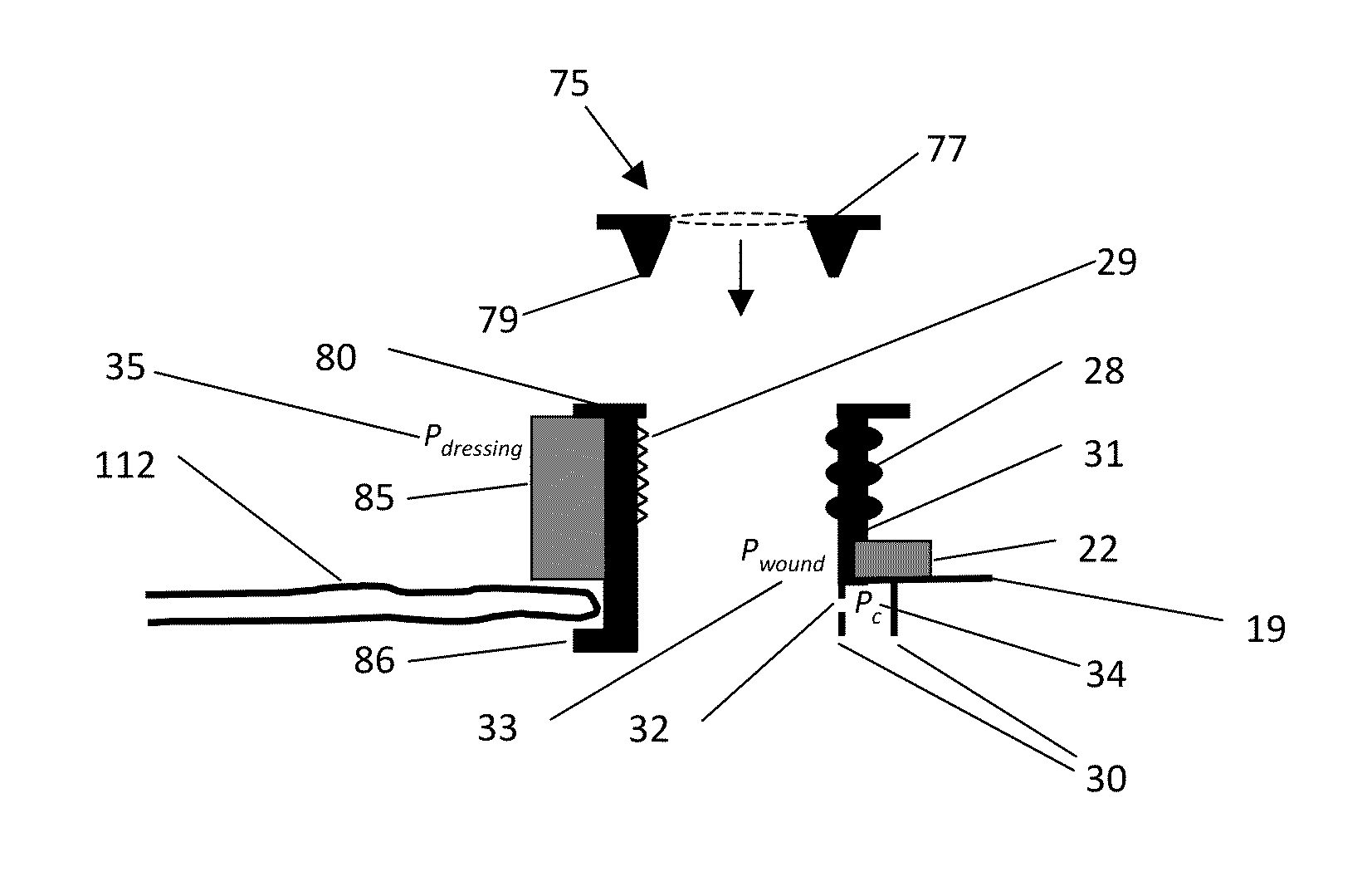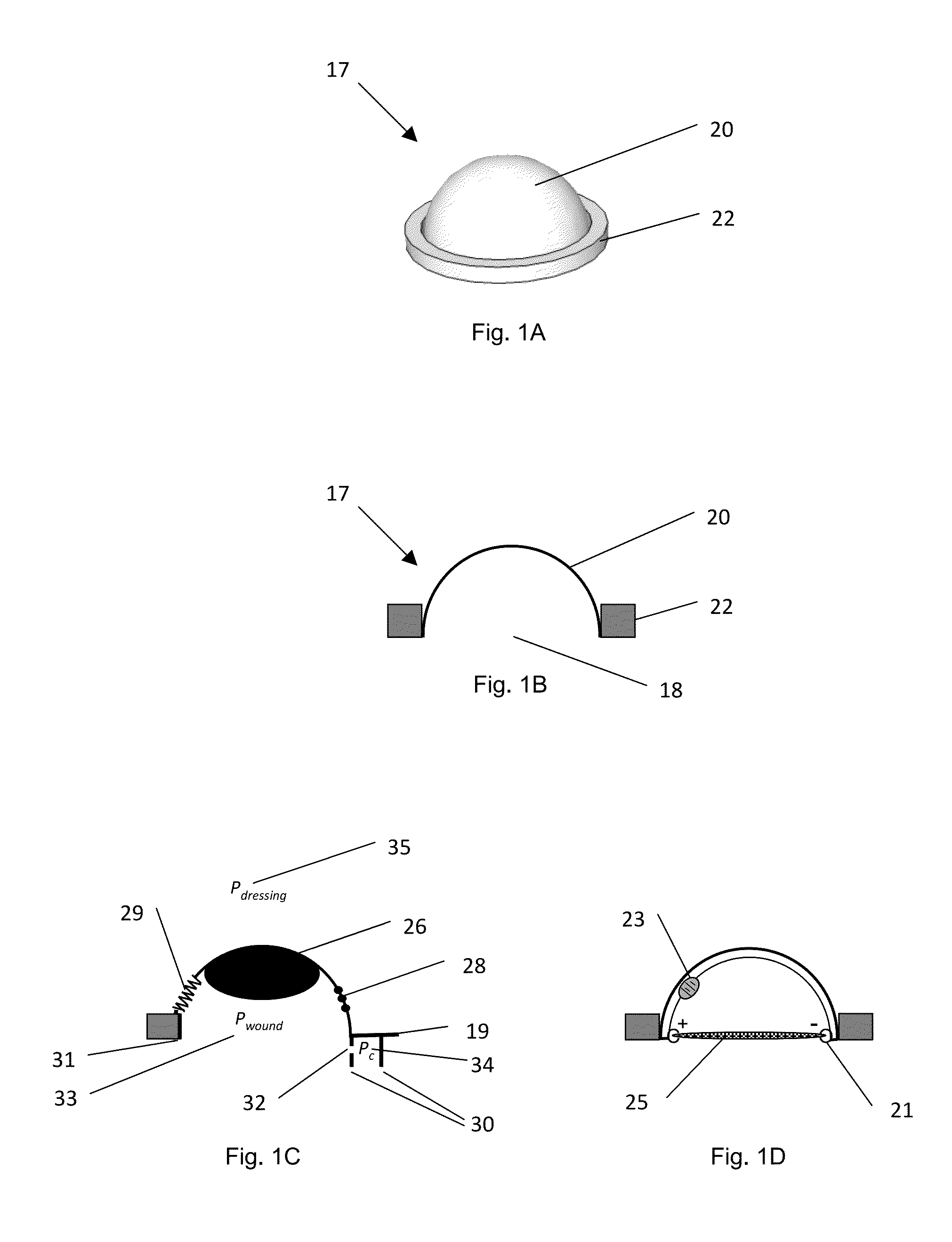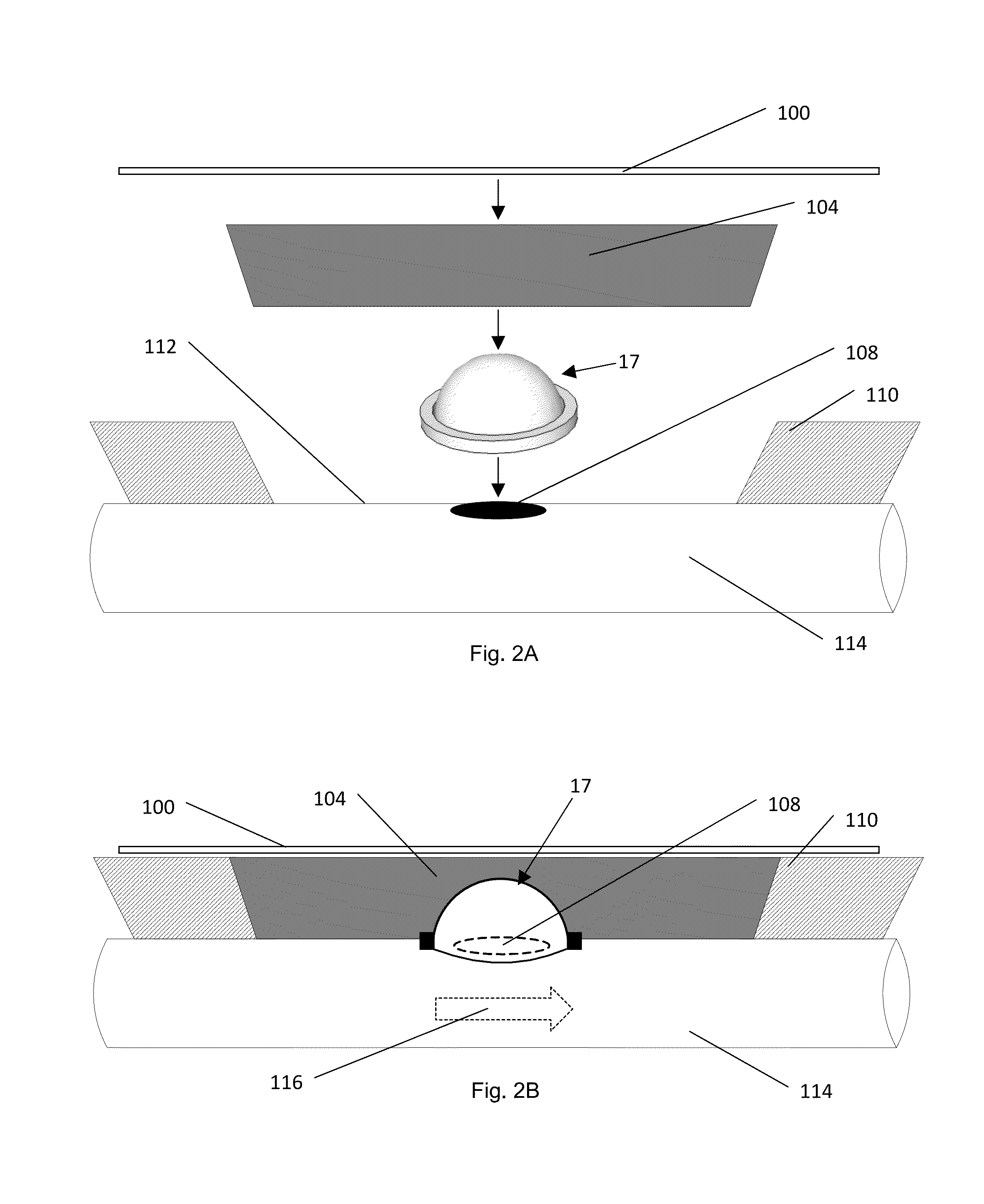Devices and methods for treatment of fistulas and complex wounds
a complex wound and fistula technology, applied in the field of complex wound treatment devices and methods, can solve the problems of enteric or intestinal fistulas, complex abdominal wound care, many challenges for healthcare professionals and patients, etc., and achieve the effects of extending the dressing life, facilitating wound healing, and ensuring healing
- Summary
- Abstract
- Description
- Claims
- Application Information
AI Technical Summary
Benefits of technology
Problems solved by technology
Method used
Image
Examples
first embodiment
[0034]a device for enteric effluent management is shown in FIGS. 1A and 1B as device 17. This particular embodiment manages the effluent by containing the effluent, and inhibiting the effluent from draining or leaking from the bowel or intestine.
[0035]Device 17 has a flexible fluid containment vessel, cap, or dome 20 defining a primary vessel opening 18 shaped and sized or otherwise configured to fit over wound or fistula. Encircling opening 18 and the perimeter of dome vessel 20 is a sealing or seating ring 22, which has an outer diameter greater than the outer diameter of dome vessel 20. Ring 22 may be formed of any number of materials, but a preferred material for this embodiment is an open-celled foam. Device 17 is configured to collapse, preferably symmetrically and evenly, from the top of its dome to ring 22 and opening 18. When in its collapsed state, device 17 retains its overall form, defining a volume for containment of fluid, when employed as part of a compression dressin...
second embodiment
[0043]a device for enteric effluent management is shown in FIGS. 3A and 3B as device 40. Device 40 is similar to and has many of the same features as device 17 of FIGS. 1A and 1B (e.g., dome vessel 20, primary vessel opening 18, vessel wall 24 and ring 22), except device 40 includes a tube 42 attached to the internal volume of fluid containment vessel 20. Device 40, with tube 42, manages the drainage of effluent from the bowel or intestine. Tube 42 is preferably fixed to vessel wall 24 or may be integrally formed thereto. Tube 42 forms a secondary vessel opening 46 (seen in FIG. 3B) to the interior cavity of vessel 20. At its other end, tube 42 provides a vent.
[0044]Similar to device 17, device 40 may include any or all of the following optional features. Device 40 may include ribbing 28 or pleats 29 in vessel wall 24 to improve symmetrical collapse of vessel wall 24 when collapsed, and / or may include a groove 31 in wall 24 as a retainer for ring 22. One or more flexible skirt(s) 30...
third embodiment
[0047]a device for enteric effluent management is shown in FIGS. 5A and 5B as device 60. Device 60 is similar to and has many of the same features as device 40 of FIGS. 3A and 3B (e.g., dome vessel 20, primary vessel opening 18, vessel wall 24, ring 22 and tube 42), except device 60 includes a mechanism for intubating the fistula or wound.
[0048]Device 60 includes an internal drainage management tube 62 present within the drainage tube 42. The internal drainage management tube 62 may be fixed or may slide freely inside tube 42. Tube 42 is preferably sufficiently long to extend above the venting end of tube 42 and into the interior volume of dome vessel 20, preferably through vessel 20 and past vessel opening 18.
[0049]Device 60 may include various optional features, illustrated in FIG. 5C. A venting path or channel 64 may be present between drainage management tube 62 and tube 42; channel 64 can be either or both an airway or effluent drainage path. Tube 62 may include perforation(s) ...
PUM
 Login to View More
Login to View More Abstract
Description
Claims
Application Information
 Login to View More
Login to View More - R&D
- Intellectual Property
- Life Sciences
- Materials
- Tech Scout
- Unparalleled Data Quality
- Higher Quality Content
- 60% Fewer Hallucinations
Browse by: Latest US Patents, China's latest patents, Technical Efficacy Thesaurus, Application Domain, Technology Topic, Popular Technical Reports.
© 2025 PatSnap. All rights reserved.Legal|Privacy policy|Modern Slavery Act Transparency Statement|Sitemap|About US| Contact US: help@patsnap.com



